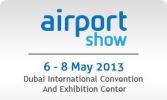Air Traffic Control issues not being taken seriously in the Middle East, asserts experts

The serious issues of Air Traffic Control (ATC) and maintenance of efficiency of operations in the skies and on the grounds to cut aircraft hovering time and aviation fuel consumption is not being given the attention it requires keeping in view the increasing air connectivity, and if not attended to on a priority, can cause major problems to the aviation industry, experts at the first Global Airport Leaders’ Forum (GALF), collocated with 13th Airport Show, asserted on Tuesday.
Speaking at a panel discussion on how airports could become the choice of passengers and airlines in the coming years, experts voiced concerns that congestion in the air and lack of effective coordination between ATCs and airport administrators often led to flight delays and tremendous increases in fuel costs, which could easily be eliminated, with strong political will and efforts by airlines around the world.
“It seems ridiculous to imagine that the same journey, from let’s say anywhere in the GCC to Dubai, which would have taken 45 minutes, now takes one hour and 10 minutes, with even faster aeroplanes, thanks to the aerospace restrictions, adding up to costs and congestions to airport operations,” said Adel Ali, Chief Executive Officer, Air Arabia, the Middle East’s largest low cost carrier.
Dr. Waleed Youssef, Director, Middle East Region at TAV Airports, Turkey, added that costs were also an important differentiator, especially in a catchment area which houses many airports, and where, in some cases, smaller airports levied a surcharge from the customer to stay afloat. He added that Air Traffic Control (ATC) systems also needed to be seamlessly integrated into the airports design from the planning stage onwards, thereby helping in streamlining costs and minimizing delays and ensuring passenger experience through the airport remains smoother.
“While we were careful to factor this important aspect into our airports in Turkey, some European airports neglected to do so, largely concerned at costs they would entail – and they have paid the price for this omission. This is a vital link, or the airport is no better than a parking lot,” he asserted. He stressed efficiency, rather than more runways and infrastructure, was the key to making any airport the preferred option in the years to come.
Paul Griffiths, Chief Executive Officer, Dubai Airports, reiterated that the biggest problem in the Middle East region, in the decades to come was congestion in the air, adding that while there was enough capacity on the ground, not enough was being done to increase air traffic management capacity.
“The waiting time for planes hovering in the air over the runway, wasting precious aviation fuel is scandalous, and ATCs and airports across the world need to work harmoniously across national boundaries to resolve this pressing problem,” he told the audience drawn from various parts of the world.
Even as opinion was sharply divided about whether airports would continue to serve just a functional purpose or become ‘hubs’ and ‘destinations’ in their own right, one decision definitely seemed unanimous is that the passenger had now become ‘customer’ in the competitive aviation business, and that the customer was definitely the king, with the airports and airlines bending over backwards to make sure that the customer had a seamless and pleasant experience while passing through the airport to the destination.
Dieter A. Heinz, President, German Airport Technologies & Equipment (GATE), an industry grouping, drew attention to the fact that passengers were now being considered customers, and their needs kept in mind while planning and designing the airports, in addition to products and services they were being offered - a vast improvement to the earlier mindset that airlines were customers and their specifications were the only things that mattered.
He pointed out that branding had become an important differential, airports were already becoming sharply distinguished because of their brand value – just like the need to drive a Porsche car or wear a Gucci suit or eat a Nestle chocolate bar, customers were already opting to fly through a certain airport for the “special something” they offered. Dubai International airport already had this enviable perception in travellers’ minds, he said.
Paul Griffiths believed that while airports would continue to serve the functional role of a transit point moving passengers to their destinations, they were also increasingly under pressure to ensure that airlines could offer passengers sufficient capacity and service quality of the highest possible standards, while factoring in costs.
“People travel because they want to get to their destination, not because they consider the airport their destination, we do not need to believe that size alone matters. Having a huge airport alone is not going to work, we need to create one of optimal size and scale, keeping the passenger profile in mind,” he pointed out. “If we don’t work hard to ensure benefit to the customer, we will lose market share,” he warned, urging the greater optimization of technology at check-ins and public areas to smoothen passenger experience.
He also noted that the idea of planning an “aerotropolis” like Dubai World Central (DWC) was just as much about creating jobs and enhancing business in sectors not restricted to aviation.
Mr. Adel Ali said that accessibility was definitely an important aspect of making an airport the one of choice for passengers and airlines, especially in places like the UAE which boasts seven major airports in a relatively small geographical area. Explaining that airports were usually designed looking ahead at least 100 years, he mentioned that just 20 years ago, while Abu Dhabi airport was considered remotely located from the city centre, today the city had grown around it, which was what organic cities did.


.png)


.jpg)


Comments
There are no comments yet for this item
Join the discussion